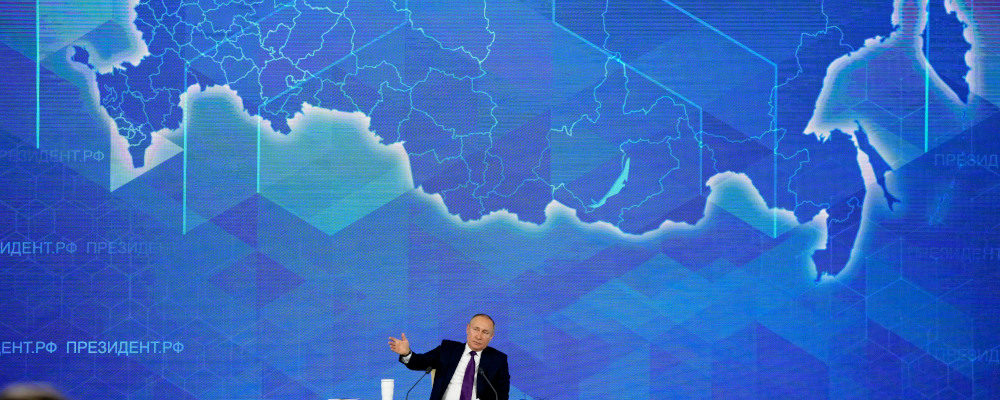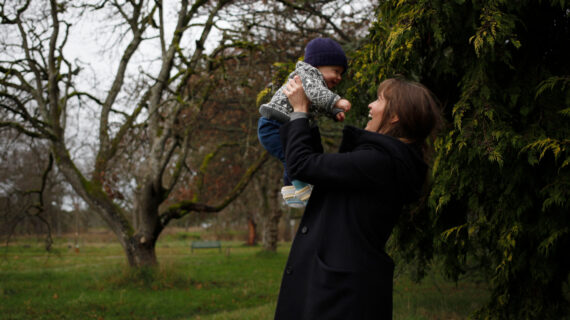The West is at their “Munich moment” again, offering largely moral support for a vulnerable democracy in Kiev and very limited military aid, all while trying to appease a hungry dictator in Vladimir Putin. Ukraine and parts thereof are simply seen as terms for negotiation, with Kiev not even at the table. Russia has succeeded in its key strategic goal of splitting NATO, showing just how brittle the alliance is under shaken U.S. leadership.
Recent media reports suggest that Canada’s cabinet is split on the question of limited military aid. Western European petrol stations faced a massive and disruptive cyberattack last week. Hungary openly broke with other NATO countries and supported Moscow’s actions in Eastern Europe. France, Germany, and Turkey have made offers to Moscow to mediate the crisis. The UK, Poland, and Ukraine announced their intentions of signing a defence pact while the United States placed 8500 troops on alert and commenced deployments of 2000 soldiers to Poland and 1000 more to Romania. But in real terms, outside limited NATO military aid and training, Ukraine is on its own. The dictators in Moscow and Beijing are elated and salivating at the prospect of further alliance splits, concessions, bloodless conquests, and territory seizures.
The only thing missing for Ukraine’s “Munich moment” is a relieved U.S. President Joe Biden waving a piece of paper and declaring “peace in our time” at the expense of Ukraine’s existence. Russian and Chinese leaders, Presidents Putin and Xi, met last week, with Beijing restating its support for Moscow’s actions against Ukraine and warning NATO not to intervene.
A sign of Moscow’s confidence being bolstered by Beijing is that it has left its Eastern Military District very weak, instead deploying some 12 of its Battalion Tactical Groups (BTGs) to Belarus. Beijing’s Winter Olympics end on February 20th and will likely be followed by Russian military intervention in Ukraine, but this could come as soon as February 9th. It should be noted that winter has frozen the ground solid in Ukraine making it optimal for off-road armoured operations geared for invasion and deep penetration.
Russia has now deployed elements of 10 Combined Arms Armies and one Tank Army opposite Ukraine from the north, east, and west. Some are now reportedly moving into staging areas from north to south, including the 29th, 35th, 5th, 36th, 41st, 20th, 6th, 8th, 49th, and 58th Combine Arms Armies and 1st Guards Tank Army, along with the 22Nd Army Corps. This represents well over 136,000 troops in 84 BTGs, with 14 more en route. There are only 170 BTGs in the Russian Armed Forces in total.
When Russia’s Airborne forces are included, the bulk of Russia’s combat power is now opposite Kiev’s borders. Some 30,000 Russian troops are now in Belarus—the largest deployment since the Cold War. Some are engaged in joint live-fire exercises with the Belarusian Army. Russian ground attack Su-25SM fighter-bombers have been deployed from the Far East Military District to Belarus, along with S-400 air defense missile units and Iskander short-range nuclear-capable ballistic missiles.
Some 10,000 reinforcements have been sent to Crimea and are on high alert. Reinforcements have also been sent to join Russian troops in Transnistria and are also engaged in war games. The Russian amphibious force in the Black Sea has increased its BTG strength in recent days by one and a half units and six large Russian amphibious ships from the North and Baltic Seas Fleets have left Taurus, Syria for the Black Sea. These ships are likely carrying several BTGs and are capable of landing heavy tanks on Ukraine’s coast. They will join another five amphibious assault ships already in the Black Sea. Russia’s naval exercises continue in the Atlantic, Pacific, and Arctic oceans and surrounding seas, and the Strategic Rocket Forces will be carrying out missile drills in mid-February to warn-off NATO. According to U.S. intelligence, the Russians are preparing to film a staged attack on Russians by NATO-backed Ukraine forces as pretence for military action.
U.S. intelligence has said that Russia has only 70 percent of the forces in place that it needs for a full, all-out invasion of Ukraine. But Moscow has several options to deal with Kiev. It could simply say that the Donbas and Crimea are Russian and back away without further action. Putin could use the crisis to make Ukrainian businesses uninsurable and destroy the economy, and it could unseat or topple the Ukrainian government all without bloodshed.
In military terms, short of full invasion Moscow could seize Ukraine’s coast, again wrecking the economy. Russia could launch a limited offensive to seize the city of Kharkov, home of Ukraine’s defence industry. Or, it could take territory up to the Dnieper River, giving President Putin the strategic depth he longs for—both for Russia and for the seized Donbas. Lastly, Russia may be prepared for an all-out invasion of Ukraine, taking it all in one massive attack. The Ukrainian Army of 2014 is not the Ukrainian military of today. It is much more combat-ready, and better trained and equipped. But it is a David versus Goliath fight and bets are on Goliath.
The danger for the West is that the crisis continues to erode confidence in NATO, the EU, and the Liberal Democratic rules-based order that has existed since the Second World War. This is what the dictators want. The failure of NATO and the EU to deal effectively with the crisis and deter Russia will have global implications as China, North Korea, and Iran follow Russia’s lead and act out against their neighbours with the proven knowledge that the U.S.-led alliances are brittle and may break under the strain. Russia and China know this, and Putin is still hoping that the West will force Ukraine to make concessions to Moscow without a shot being fired. But Russia is not pinning its hopes on a peaceful solution. The Kremlin is prepared for war.
Games of brinkmanship are dangerous and can easily escalate. When the “balloon goes up” no one knows where it will stop. What happens if Russian or Belarusian forces cross over into Romania or Poland or there is a low-level firefight with a Baltic State? What happens if Russian or Belarusian forces seize the Suwalki Gap by “accident”? What will NATO and the EU do then? There is a great deal of room for strategic miscalculation here by both sides. More than 14,000 people have been killed since Russia invaded Ukraine in 2014 and seized Crimea. A new Russian invasion is expected to kill or wound another 25,000 Ukrainian soldiers, 4000 Russian troops, up to 50,000 civilian casualties, and create up to 5 million refugees. Surely the time has come for the West to bring in the devastating economic sanctions package they have talked about for a month as a preemptive move to get Moscow’s full attention and to deter a war before it starts. Targeted cyber action to remind Moscow that war is not without heavy cost would also be appropriate. Finally, the time has come to give Kiev the arms it needs to fight back. We may need them as a strong ally in the very near future.




